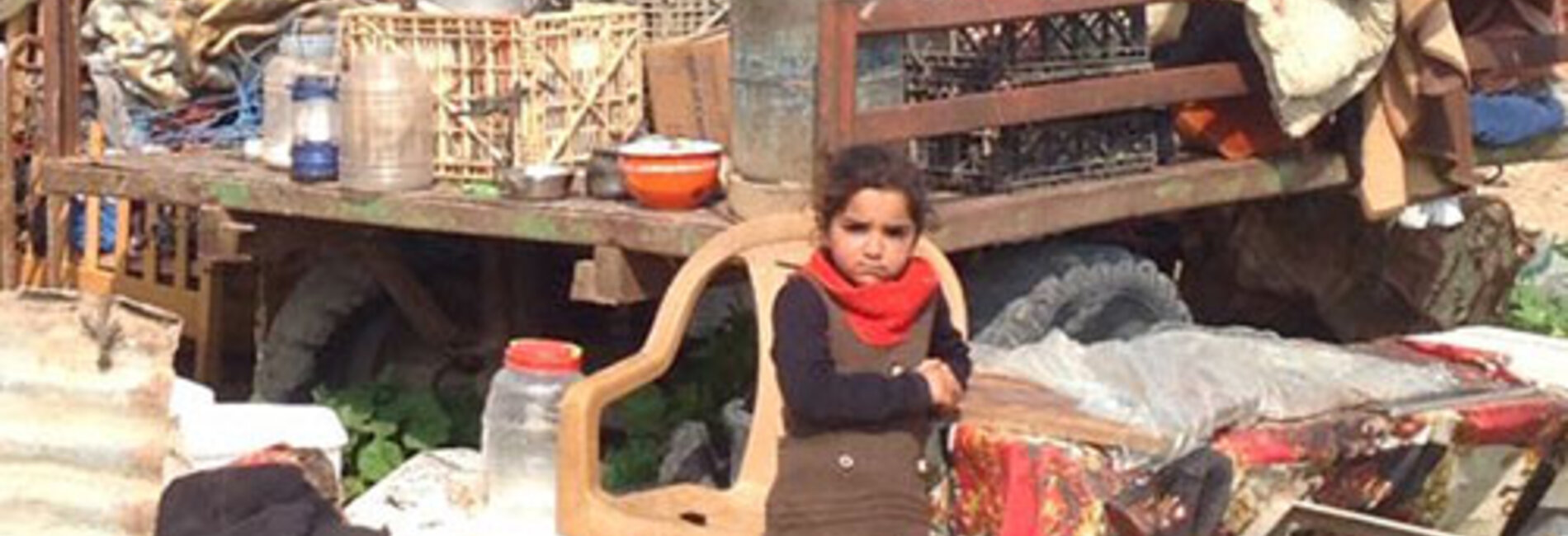Monthly Overview: February 2016
"The Government of Israel must urgently cease discriminatory and unlawful planning processes in the West Bank"
UN Secretary General
In February 2016, the Israeli authorities destroyed or dismantled 235 Palestinian homes and livelihood-related structures across the West Bank – the highest figure in a single month since OCHA began to systematically document the impact of demolitions in 2009. As a result, 440 people, half of them children, were displaced and over 1,600 people were affected in other ways. One third (108) of the structures targeted in the first two months of the year had been provided as humanitarian assistance: this is the same number of humanitarian assistance items destroyed in all of 2015.
Most of the structures were destroyed on the grounds that there was no building permit. These permits are almost impossible to obtain due to the discriminatory and unlawful planning policies applied in Area C and in East Jerusalem, as pointed out by the UN Secretary General.[1]
Also this month, the Israeli organization Peace Now released new data indicating that in 2015 construction started on 1,800 new settlement housing units, fewer than in 2014, but more than in the previous two years. Settlement expansion often has a negative impact on the living conditions of Palestinians, resulting in the loss of property and sources of livelihood and restrictions on access to services, and generating the need for assistance and protection measures by the humanitarian community.[2]
Although the wave of violence that started in October 2015 continued, the scope of incidents and casualties declined. In the first two months of 2016, four Israelis and 27 Palestinian suspected perpetrators were killed during Palestinian attacks or alleged attacks, and subsequent responses to them.[3] Another seven Palestinians were killed and over 1,000 injured during protests and clashes, a sharp decline in comparison with the last quarter of 2015, but well above pre-October 2015 levels.
The targeting of Israeli civilians and the “glorification” of these attacks by some Palestinian factions, remain major protection concerns, as stressed by the UN Special Coordinator to the Peace Process, Nikolay Mladenov, in his monthly briefing to the Security Council. Also of concern, as recently noted by the High Commissioner for Human Rights, is “the extensive, often unwarranted, use of firearms by Israeli security forces in law enforcement operations… [which] raises serious questions as to whether the rules of engagement, which are confidential, are in compliance with international law and whether such rules are adhered to in practice.”[4]
Displacement also remains a major concern in the Gaza Strip. Although no major incident of displacement has taken place since the end of the 2014 hostilities, some 76,000 internally displaced persons (IDPs) are estimated to be still living in temporary accommodation pending reconstruction of their homes. Responding to their basic needs presents a significant challenge.
This Humanitarian Bulletin highlights a project completed in February to secure regular water supplies to displaced families in eastern Khan Younis, one of the areas hardest hit during the latest hostilities. The findings of a comprehensive needs assessment of IDP households, coordinated by OCHA, will be released in March 2016.
Despite some progress in addressing the needs of IDPs, the UN Special Coordinator Mladenov noted in the abovementioned briefing that “[T]he population of Gaza is squeezed from all sides… With little prospect of seeing public sector salaries paid, increased informal taxation and a strangled economy, tensions are rising.”
Humanitarian assistance can help to reduce hardship. However, bold policy changes are required to address sources of tension and hopelessness, including a halt to demolitions and settlement expansion, the lifting of the Gaza blockade, the integration of the West Bank and Gaza under one Palestinian authority, and expediting the disbursement of pledges for the reconstruction of Gaza.[5]
[1] Report of the Secretary-General: Israeli settlements in the Occupied Palestinian Territory, including East Jerusalem, and in the occupied Syrian Golan, A/HRC/31/43, 20 January 2016, para. 69.
[2] Report of the Secretary-General: Israeli settlements in the Occupied Palestinian Territory, including East Jerusalem, and in the occupied Syrian Golan, A/HRC/25/38, 12 February 2014, paras. 21-36.
[3] This figure excludes a shooting incident that took place inside Israel perpetrated by an Israeli citizen of Palestinian origin.
[4] Report by the High Commissioner for Human Rights, A/HRC/31/40, January 2016.
[5] The call for such policy changes has been reiterated numerous times by authoritative UN bodies and senior officials. See for example: Report of the Secretary-General: Human rights situation in the Occupied Palestinian Territory, including East Jerusalem, A/HRC/28/45, 5 March 2015, para. 67-75; Briefing to the UN Security Council by the Special Coordinator to the Peace Process, Nikolay Mladenov, 18 February 2016.










